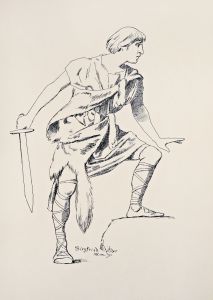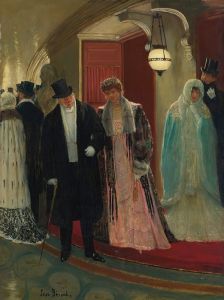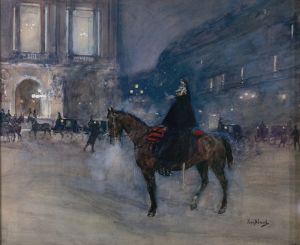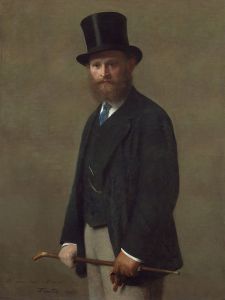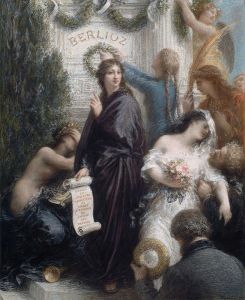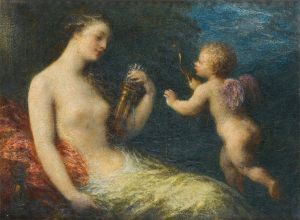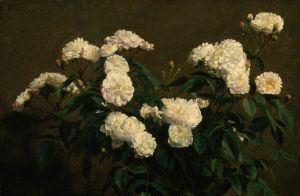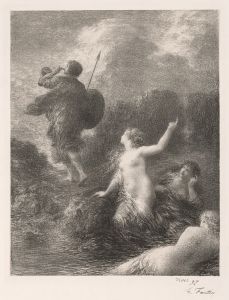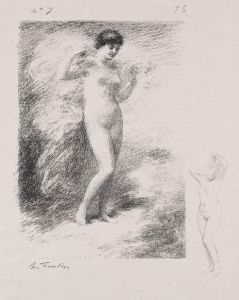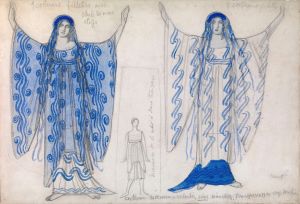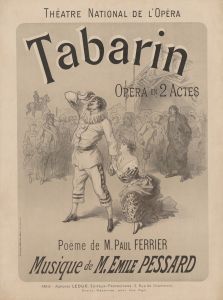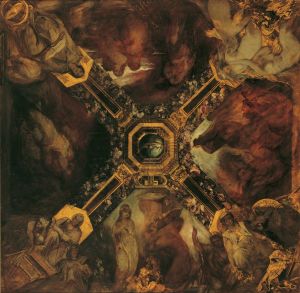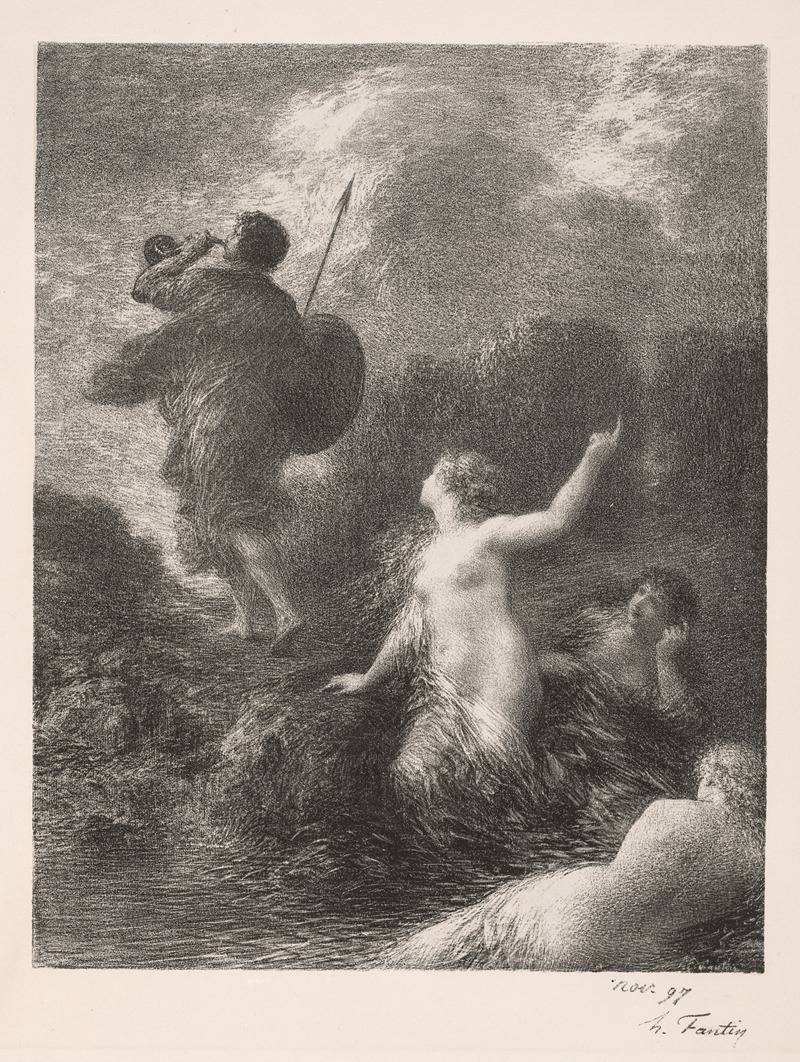
Twilight of the Gods; Siegfried and the Rhine Maidens
A hand-painted replica of Henri Fantin-Latour’s masterpiece Twilight of the Gods; Siegfried and the Rhine Maidens, meticulously crafted by professional artists to capture the true essence of the original. Each piece is created with museum-quality canvas and rare mineral pigments, carefully painted by experienced artists with delicate brushstrokes and rich, layered colors to perfectly recreate the texture of the original artwork. Unlike machine-printed reproductions, this hand-painted version brings the painting to life, infused with the artist’s emotions and skill in every stroke. Whether for personal collection or home decoration, it instantly elevates the artistic atmosphere of any space.
Henri Fantin-Latour was a French painter known for his exquisite still lifes and group portraits, as well as his imaginative works inspired by music and literature. One of his notable works is "Twilight of the Gods; Siegfried and the Rhine Maidens," which reflects his interest in the operatic and mythological themes.
Fantin-Latour was born on January 14, 1836, in Grenoble, France, and he moved to Paris in 1850, where he studied at the École des Beaux-Arts. He became associated with several prominent artists of his time, including Gustave Courbet and Édouard Manet, and was influenced by the burgeoning Impressionist movement, although he never fully embraced its techniques. Instead, Fantin-Latour developed a unique style that combined realism with a romantic sensibility.
"Twilight of the Gods; Siegfried and the Rhine Maidens" is part of Fantin-Latour's series of works inspired by the music of Richard Wagner, a composer whose operas were immensely popular in the late 19th century. Wagner's operas often drew on Germanic myths and legends, and his "Ring Cycle" is one of his most famous works. This cycle includes the opera "Götterdämmerung" (Twilight of the Gods), which features the hero Siegfried and the mystical Rhine Maidens.
Fantin-Latour's painting captures a scene from this operatic narrative, focusing on the interaction between Siegfried and the Rhine Maidens. The Rhine Maidens are mythical creatures who guard the Rhine gold, a central element in the "Ring Cycle" that symbolizes power and corruption. In the story, Siegfried, a heroic figure, encounters these maidens, who play a crucial role in the unfolding drama of the opera.
The painting is characterized by its ethereal quality and the dreamlike atmosphere that Fantin-Latour often employed in his Wagnerian works. He used soft, muted colors and delicate brushwork to convey the mystical and otherworldly nature of the scene. The figures are rendered with a sense of grace and fluidity, reflecting the influence of both classical art and the romantic ideals that permeated much of Fantin-Latour's work.
Fantin-Latour's fascination with Wagner's music was not merely an artistic endeavor but also a reflection of the cultural milieu of his time. Wagner's operas were celebrated for their innovative use of leitmotifs and complex narratives, and they inspired a generation of artists, writers, and musicians. Fantin-Latour's paintings, including "Twilight of the Gods; Siegfried and the Rhine Maidens," are visual interpretations of these musical compositions, capturing the emotional depth and grandeur of Wagner's work.
The painting is part of Fantin-Latour's broader oeuvre, which includes other Wagner-inspired pieces such as "The Ride of the Valkyries" and "The Apotheosis of Homer." These works demonstrate his ability to translate musical themes into visual art, creating a dialogue between different artistic forms.
Henri Fantin-Latour passed away on August 25, 1904, in Buré, France, leaving behind a legacy of paintings that continue to be celebrated for their beauty and emotional resonance. His works, including "Twilight of the Gods; Siegfried and the Rhine Maidens," remain an important part of the art historical canon, offering insight into the intersection of music and visual art in the 19th century.





